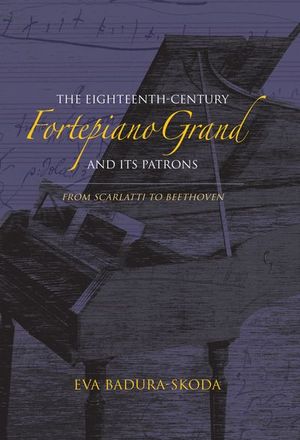The Eighteenth-Century Fortepiano Grand and Its Patrons
Published by Indiana University Press
“Badura-Skoda addresses the place of the piano in the eighteenth century from the perspective of a scholar and performer” (Eighteenth-Century Music).
In the late seventeenth century, Italian musician and inventor Bartolomeo Cristofori developed a new musical instrument—his cembalo che fa il piano e forte, which allowed keyboard players flexible dynamic gradation. This innovation, which came to be known as the hammer-harpsichord or fortepiano grand, was slow to catch on in musical circles. However, as renowned piano historian Eva Badura-Skoda demonstrates, the instrument inspired new keyboard techniques and performance practices and was eagerly adopted by virtuosos of the age, including Scarlatti, J. S. Bach, Clementi, Haydn, Mozart, and Beethoven. Presenting a rich array of archival evidence, Badura-Skoda traces the construction and use of the fortepiano grand across the musical cultures of eighteenth-century Europe, providing a valuable resource for music historians, organologists, and performers.
“Badura-Skoda has written a remarkable volume, the result of a lifetime of scholarly research and investigation. . . . Essential.” —Choice
In the late seventeenth century, Italian musician and inventor Bartolomeo Cristofori developed a new musical instrument—his cembalo che fa il piano e forte, which allowed keyboard players flexible dynamic gradation. This innovation, which came to be known as the hammer-harpsichord or fortepiano grand, was slow to catch on in musical circles. However, as renowned piano historian Eva Badura-Skoda demonstrates, the instrument inspired new keyboard techniques and performance practices and was eagerly adopted by virtuosos of the age, including Scarlatti, J. S. Bach, Clementi, Haydn, Mozart, and Beethoven. Presenting a rich array of archival evidence, Badura-Skoda traces the construction and use of the fortepiano grand across the musical cultures of eighteenth-century Europe, providing a valuable resource for music historians, organologists, and performers.
“Badura-Skoda has written a remarkable volume, the result of a lifetime of scholarly research and investigation. . . . Essential.” —Choice
BUY NOW FROM
COMMUNITY REVIEWS

